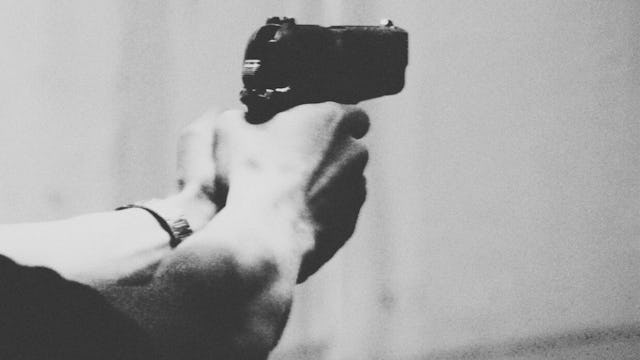The U.S. Could Benefit Greatly From Sweden's Gun Control Policies

Three months ago, I moved with my partner and two young children from North Carolina to Gothenburg, Sweden. I was excited about the experiences my family and I would have in a new country. But I did not anticipate one of the changes that has been most noticeable, especially in the wake of the recent mass shooting in Las Vegas: how liberating it would feel to live in a country that takes gun control seriously.
Sweden is not anti-gun. In fact, Sweden has one of the highest gun ownership rates in the world (although still behind the United States). Hunting is an important part of Swedish culture and recreational life. But Sweden has one-seventh the number of gun fatalities per person as the U.S. And between 1983 and 2013, there were two mass shootings in Sweden, compared to 78 in the States.
Why? This is likely because guns are very strictly regulated in Sweden. Swedes must get an individual license for every firearm. Prospective gun owners submit the application directly to the police. To obtain the license, you have to show that you have a specific need for a firearm, like hunting, sport shooting, or collecting guns. A license may be granted for protection, but in practice, these types of licenses are almost never granted. You also have to pass an exam or have been a member of a shooting club for at least six months. Weapons and ammunition must be stored in approved gun safes. There are significant penalties for breaking these rules.
In the U.S., we hear a lot about how regulations like these infringe on our freedoms. This is the price of freedom, Bill O’Reilly tells us.
What these discussions miss is how our refusal to regulate guns also impinges on our freedoms. The highest price, of course, is paid by the victims of gun violence and their families. But even if we are lucky enough to never experience gun violence ourselves, these threats shape our daily lives.
I didn’t realize this until I moved to Sweden. Like a ringing noise in my ear, I’d grown accustomed to it and didn’t really notice it until it was gone. But when my 6-year-old was invited to play at a friend’s house after school, I was thankful that I didn’t have to ask his parents whether their guns were stored safely. When a fight broke out between soccer fans as we walked by a café, we didn’t immediately worry about whether they were going to whip out their guns. Even when neo-Nazis marched through the streets of Gothenburg recently, everyone was concerned about violence, but no Swede could imagine that they’d be allowed to walk through the city with high-powered weapons.
In the U.S., meanwhile, our freedom is limited by fear. We say that we are free to go to a concert, attend a Bible study, or send our children to school. But what does it say about our “freedom” if doing these things means we fear for our lives or the lives of our loved ones? How many small changes do we have to make to our daily lives — skipping a public event, sitting near exits, watching for nervous looking people — before we can talk about how a right to bear arms impinges on our right to live freely?
Every day in Sweden, I see 7- and 8-year-old children walking themselves to school. Kids here make spontaneous playdates and run in and out of each other’s houses without their parents worrying. Most importantly, Swedes don’t seem to worry much about mass gun violence. And they certainly don’t wake up to the reports of a mass shooting and think to themselves: Again?
When we return home to the U.S. next year, this will be one of the hardest things for me to leave behind. It is liberating for my children and for me as a parent. For all of our talk in the States about the “good old days” when children could run and play freely, we do almost nothing to protect their right to do that. Yes, it might mean limiting the freedom for any person to be able to walk wherever with whatever weapon they want. But we would gain freedoms in return. We could begin to regain a freedom from the ever-present fear that our lives, at any moment, could again be shattered by the loss of life.
This article was originally published on